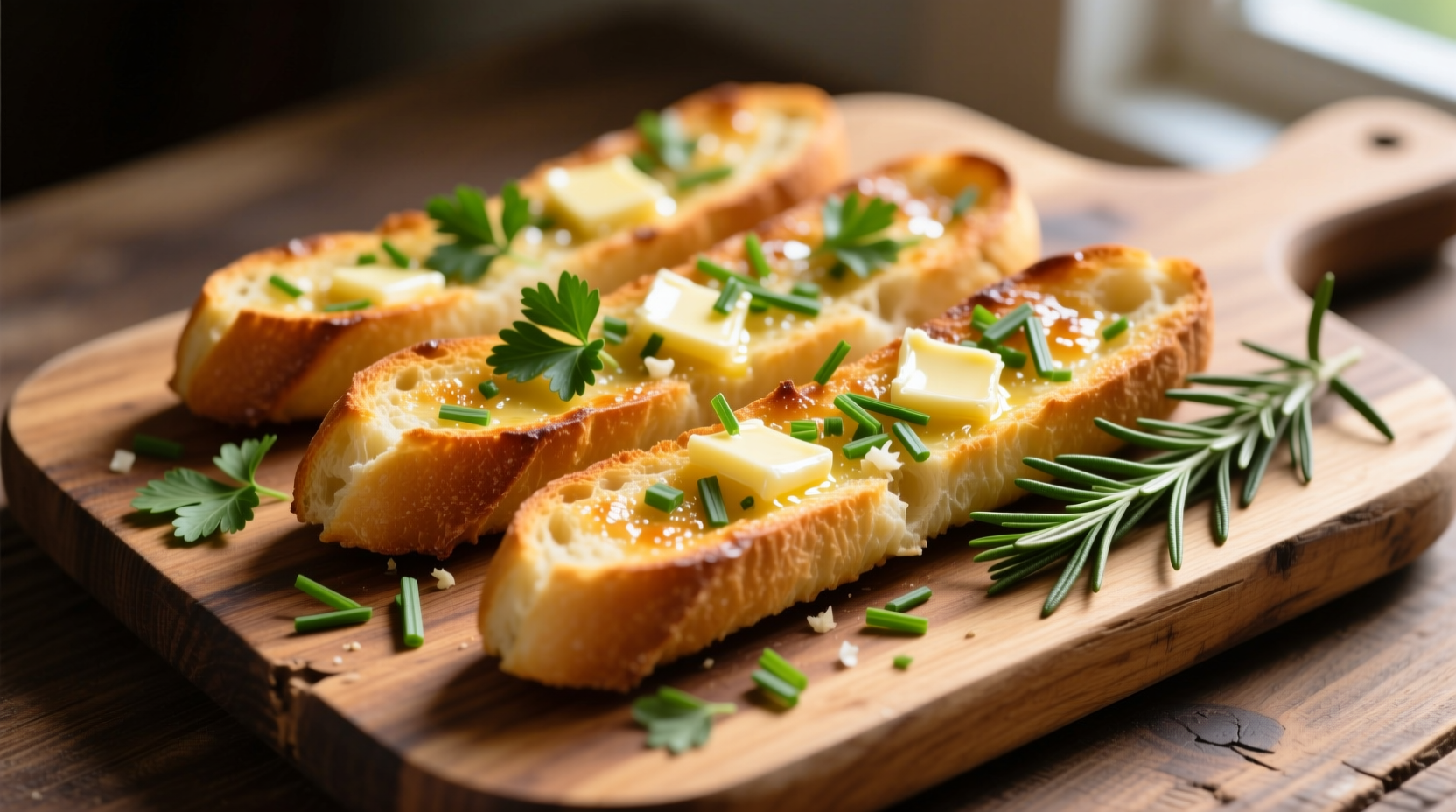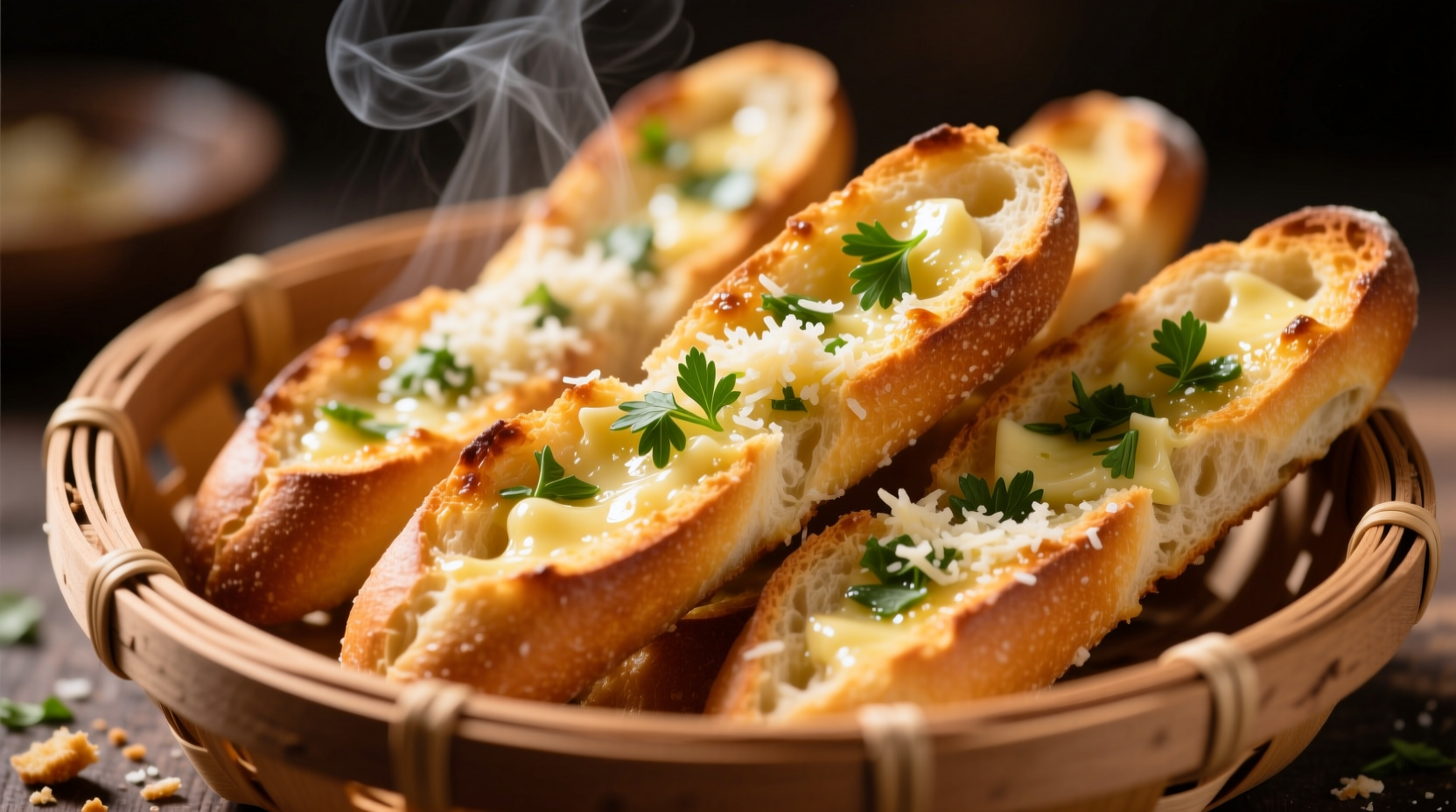Garlic breadsticks are crispy, golden-baked dough strips infused with garlic, herbs, and olive oil—perfect as an appetizer, side dish, or snack. Master the ideal texture, flavor balance, and preparation techniques with this definitive guide.
The Essential Guide to Perfect Garlic Breadsticks
Nothing elevates a meal like freshly baked garlic breadsticks—crisp on the outside, tender within, and bursting with aromatic garlic flavor. Whether you're preparing them for a family dinner, party appetizer, or quick snack, understanding the fundamentals transforms good breadsticks into exceptional ones. This guide reveals the precise techniques, ingredient ratios, and common pitfalls backed by culinary science and tradition.
From Ancient Flatbreads to Modern Delight: A Culinary Evolution
Garlic bread's origins trace back to ancient civilizations where flatbreads were rubbed with raw garlic—a practical method to enhance flavor and leverage garlic's antimicrobial properties. The modern iteration emerged in mid-20th century Italy as "pane all'aglio," traditionally made with stale bread, olive oil, and fresh garlic. American pizzerias popularized the breadstick version in the 1970s, transforming it into the beloved appetizer we know today.
Garlic Bread Evolution Timeline
- 8000 BCE: Ancient Mesopotamians cultivate garlic, pairing it with flatbreads
- 1st Century CE: Roman soldiers consume garlic-rubbed bread for stamina
- 1940s: Italian immigrants introduce "pane all'aglio" to American restaurants
- 1970s: Pizza chains popularize garlic breadsticks as standard appetizers
- 2000s-Present: Gourmet variations emerge with herb-infused oils and artisanal doughs
Why Your Garlic Breadsticks Fail (And How to Fix Them)
Most home cooks encounter one or more of these common issues:
- Soggy texture: Caused by excessive oil or underbaking—use clarified butter instead of olive oil for crispness
- Burnt garlic: Raw garlic burns at 350°F—always mix with oil first or use roasted garlic paste
- Dense interior: Overworked dough develops too much gluten—handle minimally after first rise
- Weak flavor: Insufficient garlic infusion time—let mixture steep 30 minutes before applying
The Perfect Garlic Breadsticks Formula
Professional results require precise ingredient ratios and technique. This tested formula yields consistently excellent results:
| Ingredient | Measurement | Professional Purpose |
|---|---|---|
| All-purpose flour | 3 cups (360g) | Optimal gluten development without toughness |
| Active dry yeast | 2¼ tsp (7g) | Predictable rise without overpowering flavor |
| Garlic (fresh) | 4 large cloves | Balanced pungency without bitterness |
| Unsalted butter | ⅓ cup (75g), clarified | Higher smoke point than olive oil for crispness |
| Fresh parsley | 3 tbsp, finely chopped | Color contrast and herbal brightness |
Step-by-Step Preparation: The Professional Method
Dough Preparation (90 Minutes)
- Dissolve yeast in 1 cup warm water (110°F) with 1 tsp sugar—wait 5-7 minutes until foamy
- Mix flour, salt, and 2 tbsp olive oil in stand mixer with dough hook
- Gradually add yeast mixture while mixing on low speed
- Knead 5-7 minutes until smooth and elastic—dough should pass "windowpane test"
- Cover bowl with damp cloth, rest in warm place for 60 minutes until doubled
Garlic Infusion Technique
While dough rises, prepare the garlic mixture:
- Melt butter and cool to 120°F (critical temperature to preserve garlic compounds)
- Finely mince garlic cloves—avoid pre-minced for superior flavor
- Mix garlic with melted butter, parsley, ½ tsp salt, and ¼ tsp black pepper
- Let mixture steep 30 minutes—this allows alliinase enzyme to activate full flavor
Shaping and Baking
- Punch down risen dough and divide into 16 equal portions
- Roll each portion into 8-inch sticks on lightly floured surface
- Place on parchment-lined baking sheet, cover, rest 15 minutes
- Brush generously with garlic mixture
- Bake at 400°F for 14-16 minutes until golden brown
- Immediately brush with remaining garlic mixture after baking

When Garlic Breadsticks Shine (And When to Choose Alternatives)
Understanding context boundaries ensures perfect meal pairing:
- Ideal for: Italian dinners, casual gatherings, children's meals, quick snacks
- Avoid when: Serving delicate seafood (overpowers subtle flavors), formal occasions (consider artisanal bread instead)
- Best accompaniments: Pasta dishes, tomato-based soups, grilled vegetables
- Storage limitations: Best consumed within 2 hours—reheating diminishes crisp texture
Advanced Variations Worth Trying
Elevate your garlic breadsticks with these chef-approved adaptations:
- Cheesy twist: Sprinkle ¼ cup grated Parmesan during last 5 minutes of baking
- Herb-infused: Add 1 tsp chopped rosemary to garlic mixture for earthy complexity
- Spicy kick: Mix ½ tsp red pepper flakes into garlic butter
- Garlic confit version: Roast whole garlic cloves in olive oil at 250°F for 45 minutes before mincing
Food Safety Considerations
According to USDA guidelines, garlic-in-oil mixtures require special handling to prevent botulism risk. Always:
- Use fresh garlic (never pre-minced in jars)
- Consume garlic-oil mixtures within 24 hours
- Store leftovers in refrigerator below 40°F
- Reheat to 165°F internal temperature before serving leftovers
Frequently Asked Questions
Can I make garlic breadsticks without yeast?
Yes, use a quick breadstick recipe with baking powder. Combine 2 cups flour, 1 tbsp baking powder, ½ tsp salt, ⅓ cup melted butter, and ¾ cup milk. Roll into sticks and bake at 425°F for 12-15 minutes. The texture will be more biscuit-like than traditional yeast breadsticks.
Why do my garlic breadsticks burn on the bottom?
This typically occurs from baking directly on a dark metal sheet. Use parchment paper or a silicone mat for even heat distribution. Position oven rack in the center and reduce temperature by 25°F if using convection setting.
How can I make garlic breadsticks gluten-free?
Substitute all-purpose flour with a 1:1 gluten-free blend containing xanthan gum. Add 1 extra egg white to improve structure. Let dough rest 10 minutes after mixing to allow flours to hydrate fully. Bake at 375°F for 16-18 minutes.
What's the best way to reheat leftover garlic breadsticks?
Revive crispness by reheating in a 350°F oven for 5-7 minutes. Avoid microwaving, which creates sogginess. For best results, wrap in foil with a light sprinkle of water to restore moisture before oven reheating.
Can I freeze garlic breadsticks before baking?
Yes, shape unbaked breadsticks on parchment-lined baking sheet, freeze solid (2 hours), then transfer to freezer bags. Bake frozen at 425°F for 18-20 minutes—no thawing required. This method preserves texture better than freezing after baking.











 浙公网安备
33010002000092号
浙公网安备
33010002000092号 浙B2-20120091-4
浙B2-20120091-4